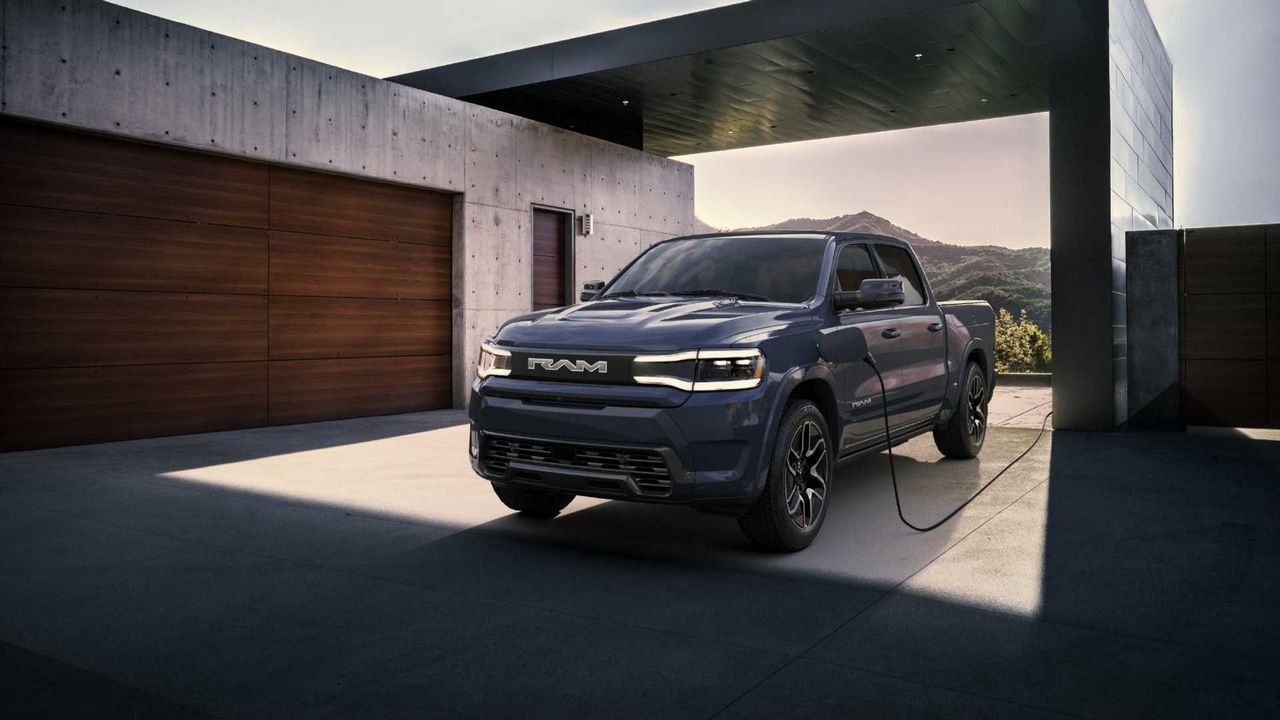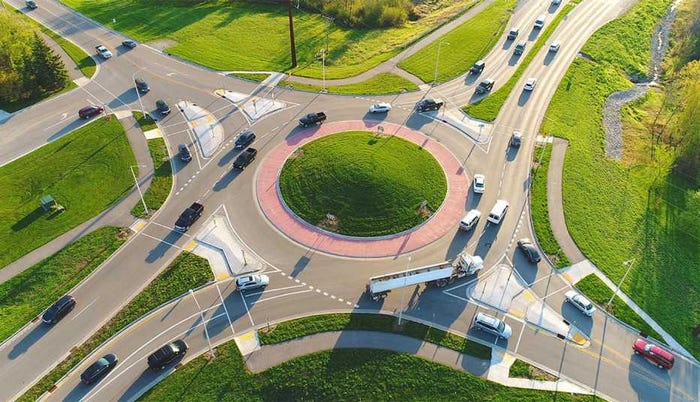What Europe Can Teach America About Road Safety: Killing by DesignWhat Europe Can Teach America About Road Safety: Killing by Design
The European Union has extensive legislation governing technologies and vehicle design specifically to build in safety features, not only for the vehicle occupants but also for other road users.

Second of Two Parts
When a European motorist leaves the airport in a rental car for a first visit to the U.S., he or she will be instantly struck by the sheer size of the domestic vehicles looming over them on the highway.
These have been getting bigger and heavier over the past few decades, filled with the latest safety and driver assistance technology. Yet, U.S. road fatality rates remain far higher than in Europe where road deaths are consistently falling year-on-year.
However, the size and mass of a vehicle is only one issue that affects the likelihood of fatalities, with vehicle design taking a lot of the responsibility for increasing or decreasing safety in the event of a collision.
So, it’s little wonder that the appearance of the Cybertruck on Tesla’s stand at last year’s Paris auto show became the butt of hilarity as European journalists discussed its chances of getting approval for use on Continental roads. Its tall flat steel front and razor-sharp angled wings would pass through a troop of young Scouts crossing the road like a knife through butter. “Not a snowball’s hope in hell,” was one assessment of it being allowed on European roads.
That’s because the EU has extensive legislation governing technologies and vehicle design specifically to build in safety features for other road users.
These were toughened in 2019 to mandate advanced emergency braking systems that would automatically detect a potential collision and activate the braking system. In the first phase, it would be able to detect moving vehicles and stationary obstacles ahead of the vehicle, and in a later phase, it would also be able to detect vulnerable road users such as pedestrians.
Other EU mandates include:
A lane-keeping system that would turn the steering wheel or apply pressure to the brakes when a lane departure occurs or is about to occur and a collision may be imminent.
An accident data recorder that would store critical crash-related parameters and information such as speed and the functioning of safety systems before, during and after a collision.
An enlarged head-impact protection zone that would protect vulnerable road users and mitigate their potential injuries in the case of an accident.
NCAP Europe runs Vulnerable Road User Protection tests to see how well vehicles protect those users in a collision.
In these tests, the potential risks of injuries to a pedestrian’s head, pelvis, and upper and lower leg are assessed. Matthew Avery, director of strategic development for Euro NCAP, explains: “The biggest risk issue for vulnerable road users and other road users is the fundamental design of the front end of the vehicle. Both its geometry, height and shape especially around the bonnet (hood) and its stiffness (its ability to absorb energy) all play a bigger role. Euro NCAP has tested vehicles that have large SUV proportions but are able to protect other road users well.”
He points to one of the organization’s latest tests of the new electric e-Terron produced by Chinese manufacturer Maxus. In Euro NCAP’s compatibility testing, to imitate real-life critical situations in relation to other road users, the vehicle performed very well.
It also performed well in the auto-safety agency’s pedestrian protection testing, gaining a top 5-star rating. “Some would say given its size and mass this is surprising, but Euro NCAP believes that this is just an example of what can be done if safety is made a priority by carmakers,” says Avery.
Thatcham Research’s principal engineer for automotive safety, Alex Thompson,
says some simple design tweaks can have a major impact on vulnerable road users, adding: “Even things like wiper spindles can be protected – if you look at the design of European cars now, the wiper spindles are hidden away underneath the bonnet.
“It is now a minimum legal requirement for pedestrian safety standards just in terms of the passive safety features.
“It is only in the last year that the NHTSA in the States has started looking at pedestrian safety and thinking of new rule-making for this. So, already they are 25 years behind where we are in Europe.”
In fact, Thompson points to the first moves to debate the design of a vehicle’s front end in the U.S. has begun with the insurers’ association, the Insurance Institute for Highway Safety, which has done a study on vehicles’ front-end shapes and found that the higher fronts of vehicles are much more likely to injure and kill pedestrians.
He explains: “It’s also about the bluntness of the front end. You see pickup trucks in the States with very high, almost vertical, front ends and you do not see that in Europe. Part of the reason for that is…the thought that has to be put into protecting pedestrians because of the test procedures put in to improve road safety.
“With the lower and more angled designed front ends, in an accident with a pedestrian, they sort of wrap round the vehicle and you can manage how head injuries can be mitigated. Whereas, if you come up against a solid, high vertical structure it would, in Europe, be equivalent to being hit by an HGV (heavy goods vehicle),” Thompson says.
“So, coming away from that shape of vehicle with high, blunt front ends is something that would help reduce fatalities along with trying to reduce the vehicle mass and bring the U.S. more towards the results we are seeing in Europe.
“It is not acceptable anymore to say: ‘I’m in a larger vehicle so I’m alright!’ We have reached a level where road safety in general has improved so much since the 1990s that we should be considering what the car can do for the road users around it as well as its own occupants.”
There is also a discussion to be had over U.S. road infrastructure, particularly at intersections. Europe has been addressing this issue since the 1990s and has seen the proliferation of roundabouts at intersections. The Economist’s study points to data that shows in the early 1990s the attrition rate on U.S. roads was about the same as in France. Now the French road user is three times less likely to suffer a fatal collision than his or her American peer.

Roundabouts increasingly replacing intersections on U.S. roads.
Roundabouts slow the traffic into a circular one-way system that offers ample vision of approaching oncoming traffic and allows a much safer entry and exit from an interchange – often without the need to stop completely.
Thompson observes: “I am aware there are some roundabouts being introduced in some areas in the U.S. because of the safety issue with interchanges. They will prevent that really nasty T-bone accident, especially with a large SUV impacting the side of a vehicle where the front structure of that SUV will strike at head-height of a driver in a smaller vehicle.”
Conclusion
When all is said and done, it’s still going to be a tough sell to the U.S. consumer that they should be trading down to a smaller, lighter, slightly more fragile vehicle to ferry themselves and their families around in the Rollerball-like war now being waged on American streets and roads.
The Economist’s study quotes a paper published by Michael Anderson and Maximilian Auffhammer from the University of California, Berkeley, estimating that when two cars collide, a 1,000-lb. (454-kg) increase in the weight of one vehicle increases the risk of a fatality in the other by 47%.
America is known for its winners-and-losers culture. So, does a “winner,” who can afford a very large vehicle, take risks with his or her safety and that of their loved ones to save “losers” in smaller vehicles?
However, what safety regulators such as NHTSA consider is the math suggested by the study: For every extra life saved inside those monster trucks and SUVs, 12 more people in other vehicles are going to die.
About the Author
You May Also Like

